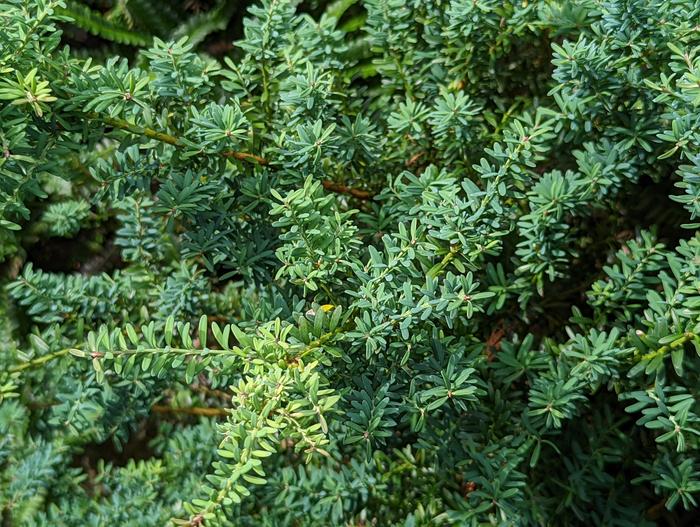Mountain Plum-Pine
(Podocarpus lawrencei)
Mountain Plum-Pine (Podocarpus lawrencei)
/
/

Rudolphous
CC BY-SA 4.0
Image By:
Rudolphous
Recorded By:
Copyright:
CC BY-SA 4.0
Copyright Notice:
Photo by: Rudolphous | License Type: CC BY-SA 4.0 | License URL: https://creativecommons.org/licenses/by-sa/4.0 | Uploader: Rudolphous | Publisher: Wikipedia Commons
















Estimated Native Range
Summary
Podocarpus lawrencei, commonly known as Mountain Plum-Pine, is an evergreen shrub native to the alpine regions and cool temperate rainforests of Australia, particularly Tasmania. It exhibits a variable growth habit, typically ranging from 2 to 30 feet in height, with cultivated garden varieties usually between 2 and 5 feet. The plant features small, bright red berry-like cones with a 5–10 mm long red aril and one (rarely two) apical seeds 6–8 mm long. These cones are consumed by birds and marsupials, although they are toxic to most other mammals, including humans. Mountain Plum-Pine can be remarkably long-lived, with some individuals reaching up to 600 years of age. Its growth rings reflect the climatic conditions of the growing season, with narrower rings indicating colder, snowier years.
Mountain Plum-Pine is valued for its resilience to dry conditions and its ability to resprout after severe drought-induced leaf loss. It can withstand temperatures ranging from −16 °C to 45 °C and thrives in both full sun and heavy shade. The shrub is slow-growing, adding about 3–5 cm of length annually. It can be propagated from cuttings or seeds, and new foliage emerges in a vibrant lime green before maturing to an olive green. In cultivation, it is appreciated for its adaptability and is often used as an indoor plant in bright windows, for bonsai, or as a hedging plant, although it requires patience due to its slow growth rate. It performs best in full sun to part shade, with low water requirements, and is adaptable to various soil types with different drainage rates.CC BY-SA 4.0
Mountain Plum-Pine is valued for its resilience to dry conditions and its ability to resprout after severe drought-induced leaf loss. It can withstand temperatures ranging from −16 °C to 45 °C and thrives in both full sun and heavy shade. The shrub is slow-growing, adding about 3–5 cm of length annually. It can be propagated from cuttings or seeds, and new foliage emerges in a vibrant lime green before maturing to an olive green. In cultivation, it is appreciated for its adaptability and is often used as an indoor plant in bright windows, for bonsai, or as a hedging plant, although it requires patience due to its slow growth rate. It performs best in full sun to part shade, with low water requirements, and is adaptable to various soil types with different drainage rates.CC BY-SA 4.0
Plant Description
- Plant Type: Shrub
- Height: 2-5 feet
- Width: 4-12 feet
- Growth Rate: Slow
- Flower Color: N/A
- Flowering Season: Non-Flowering
- Leaf Retention: Evergreen
Growth Requirements
- Sun: Full Sun, Part Shade
- Water: Low
- Drainage: Fast, Medium, Slow
Common Uses
Bird Garden, Border Plant, Fragrant, Hedges, Low Maintenance, Rock Garden
Natural Habitat
Alpine regions and cool temperate rainforests of Australia, particularly Tasmania
Other Names
Common Names:
Scientific Names: Podocarpus alpinus , Podocarpus lawrencei , Podocarpus parvifolius , Nageia alpina , Nageia parvifolia , Podocarpus lawrencei subsp. errinundraensis
GBIF Accepted Name: Podocarpus lawrencei Hook.f.